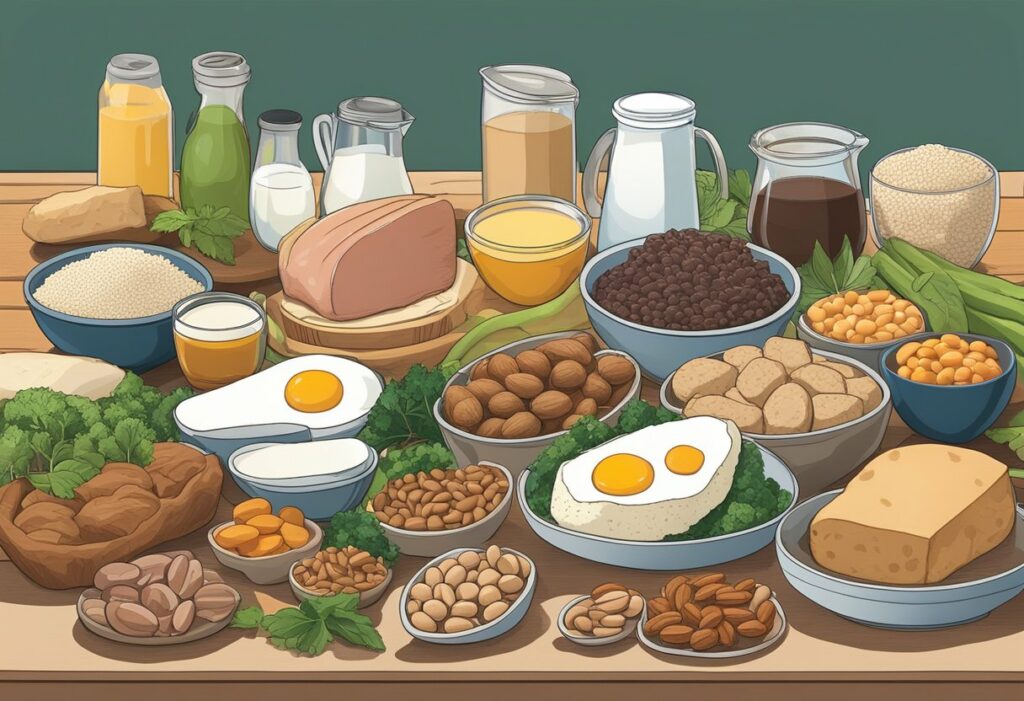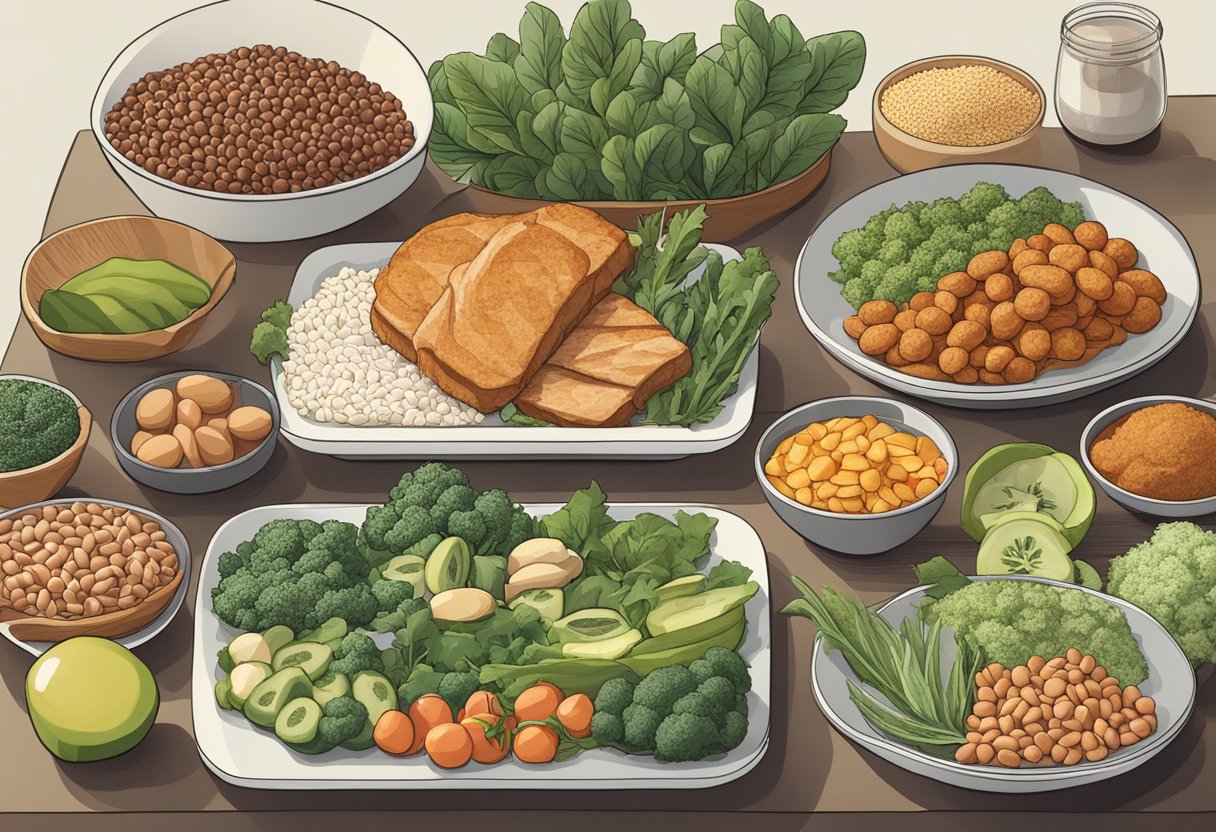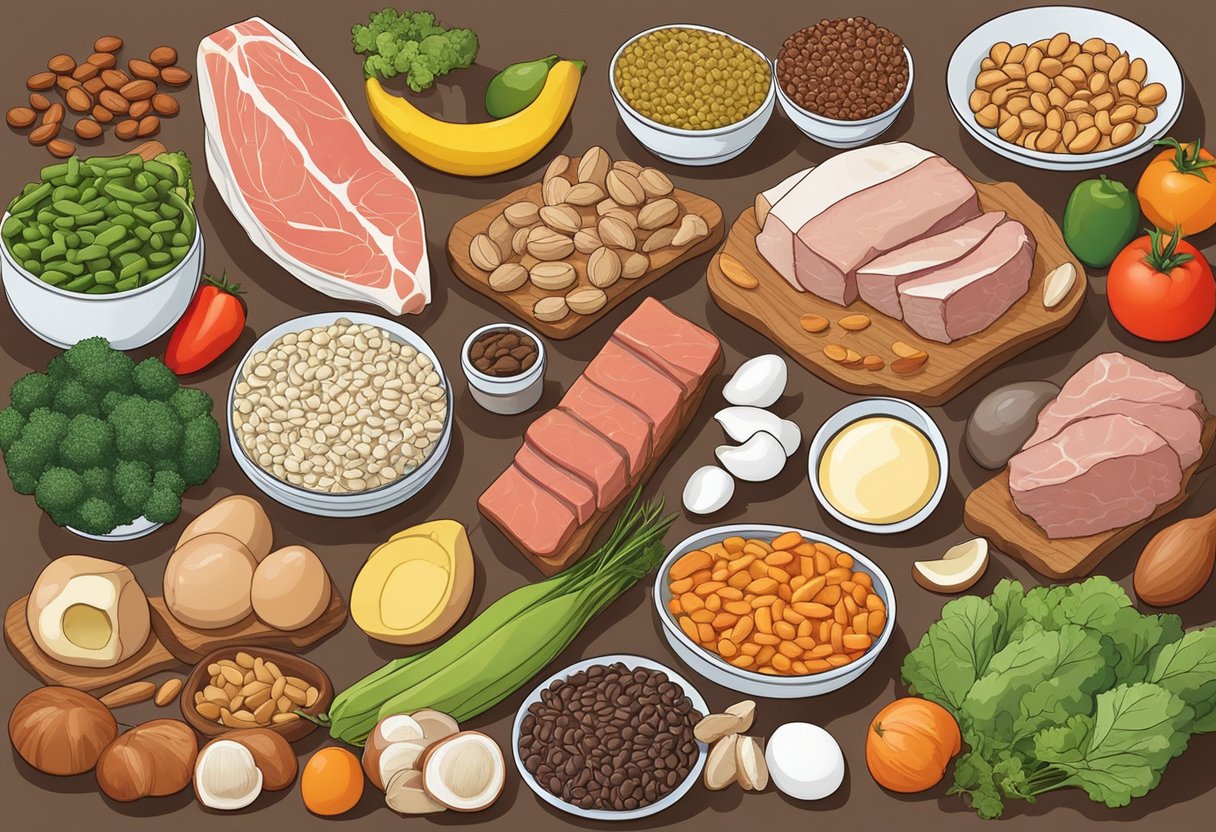Understanding Protein and Its Importance
Protein is a crucial macronutrient in the human diet, necessary for building, repairing, and maintaining tissues. It is a component of every cell in the body and is involved in various biochemical functions, including the synthesis of enzymes, hormones, and neurotransmitters.
Composed of amino acids, proteins are classified into two types: complete and incomplete. Complete proteins contain all nine essential amino acids that the body cannot synthesize on its own. Typically, animal-based foods such as meat, fish, poultry, eggs, and dairy are complete proteins. On the other hand, incomplete proteins are usually found in plant-based sources and may lack one or more of these essential amino acids.
The body requires protein for:
- Muscle repair and growth: After exercise, proteins aid in healing micro-tears in muscle fibers, leading to muscle growth.
- Hormone production: Proteins are involved in creating hormones that regulate bodily functions.
- Immune system function: Antibodies, which are proteins, help fight infections.
- Transportation and storage of molecules: Hemoglobin, a protein in red blood cells, transports oxygen throughout the body.
Individual protein needs vary based on factors like age, sex, and activity level. The Recommended Dietary Allowance (RDA) for protein is 0.8 grams per kilogram of body weight per day for the average adult. Balancing protein intake from both animal and plant sources can ensure that one’s diet is nutritionally diverse and sustainable.
Animal-Based High Protein Foods

Animal-based foods are esteemed for their high-quality protein content that supports muscle building and repair. These sources are packed with essential amino acids necessary for various bodily functions.
Dairy and Eggs
Dairy products and eggs provide an impressive range of high-protein options. One large egg contains approximately 6 grams of protein. Dairy products like Greek yogurt can offer up to 20 grams of protein per serving. Cottage cheese is another dairy product that packs about 28 grams of protein per cup, making it a favorite among fitness enthusiasts.
Dairy:
- Greek yogurt
- Skim milk
- Cottage cheese
-
Eggs: Boiled, Scrambled, Poached
- Animal-Based High Protein Foods
- These classic protein sources offer all nine essential amino acids your body can’t make on its own:
| Food Source | Protein per Serving (approx.) | Other Key Nutrients |
|---|---|---|
| Dairy & Eggs | ||
| Greek Yogurt (1 cup) | 20g | Calcium |
| Cottage Cheese (1 cup) | 28g | Calcium, Vitamin B12 |
| Eggs (1 large) | 6g | Vitamin D, Choline |
Meat and Poultry
Meat and poultry are classic high-protein foods. A single 3-ounce serving of chicken breast yields about 26 grams of protein. For red meat, lean beef is particularly protein-rich, with around 22 grams per 3-ounce serving. These proteins also provide important nutrients such as iron, zinc, and B vitamins.
Meat:
Poultry:
- Chicken breast
- Turkey slices
Fish and Seafood
Fish and seafood are not only high in protein but also offer omega-3 fatty acids which are beneficial for heart health. A 3-ounce serving of salmon can contain as much as 22 grams of protein. Shellfish like shrimp are also high in protein, with about 20 grams per 3-ounce serving and are low in fat.
Fish:
- Salmon
- Tuna
- Halibut
Seafood:
- Shrimp
- Crab
- Lobster
Plant-Based High Protein Options

Plant-based proteins offer a variety of options for those looking to incorporate non-animal sources of protein into their diet. These sources are not only abundant but also come with additional dietary benefits such as fiber and essential nutrients.
Legumes and Beans
Legumes and beans are a powerhouse of protein and are staple foods in many cultures. They are also rich in fiber, vitamins, and minerals. For example, lentils provide about 18 grams of protein per cooked cup (240 ml), while a cup of cooked black beans provides around 15 grams of protein.
- Chickpeas (Garbanzo beans): Approximately 14.5 grams per cup (cooked)
- Kidney beans: Approximately 13.4 grams per cup (cooked)
Nuts and Seeds
Nuts and seeds are dense in nutrients and provide healthy fats along with protein. They serve as easy snacks and can boost protein intake when added to salads, yogurts, and other dishes. A quarter-cup of almonds offers around 7.5 grams of protein, while sunflower seeds provide about 6 grams per quarter-cup.
- Pumpkin seeds: Essential for zinc, offering 8.5 grams of protein per ounce (28 grams)
- Chia seeds: Offering 4 grams of protein per ounce (28 grams), they are also rich in omega-3 fatty acids
Whole Grains
Whole grains contribute a significant amount of protein to a plant-based diet, along with fiber and other nutrients. For instance, a single cup of cooked quinoa provides about 8 grams of protein, and oats offer around 6 grams per half-cup in raw form.
- Barley: 3.5 grams of protein per 100 grams (cooked)
- Brown rice: Offering 5 grams of protein per cup (cooked), it is a good source of complex carbohydrates.
Nutritional Comparison Between Animal and Plant Proteins
Animal and plant proteins differ in several nutritional aspects. Animal proteins, found in meat, poultry, fish, eggs, and dairy products, generally contain all nine essential amino acids required by humans, which qualifies them as complete proteins. They are also rich in vitamin B12, D, Iron, and Zinc.
In contrast, many plant proteins are considered incomplete, as they often lack one or more of the essential amino acids. Nonetheless, some plant sources like quinoa and soy are exceptions, offering complete protein profiles. Plant-based proteins, such as those found in beans, lentils, nuts, and whole grains, come with the added benefit of dietary fiber, which is absent in animal proteins.
Here is a brief comparison of protein content per 100 grams in common animal and plant-based foods:
| Food Source | Protein (g) | Notable Nutrients |
|---|---|---|
| Chicken breast | 31 | B vitamins, phosphorus, selenium |
| Salmon | 25 | Omega-3 fatty acids, vitamin D |
| Lentils | 9 | Fiber, folate, manganese |
| Black beans | 8 | Fiber, potassium, iron |
| Almonds | 21 | Healthy fats, vitamin E, magnesium |
| Tofu (firm) | 16 | Calcium, magnesium, iron |
While each type has distinct nutritional benefits, their absorption and utilization can vary. Animal proteins are typically more easily digested and absorbed, leading to a higher uptake of amino acids. Plant proteins, however, may require consumption of a variety of sources to ensure all essential amino acids are ingested. It’s also worth noting the differences in associated fats — animal proteins are often higher in saturated fats, while plant proteins typically contain unsaturated fats.
Incorporating High Protein Foods into a Balanced Diet

Achieving a balanced diet requires integrating high-protein foods in a way that aligns with an individual’s dietary needs and preferences. Protein is a macronutrient essential for the repair and growth of tissues, hormone production, and overall health.
Animal-Based Proteins:
Animal sources provide complete proteins, which contain all the essential amino acids. Here are some ways to include them:
- Meats: Choose lean cuts of beef, pork, or lamb and integrate them into meals 2-3 times a week.
- Poultry: Skinless chicken or turkey breasts can be incorporated into diverse dishes.
- Seafood: Aim for two servings of fish per week, particularly fatty fish like salmon for omega-3 fatty acids.
- Dairy: Low-fat options like Greek yogurt, milk, and cheese can be consumed daily.
Plant-Based Proteins:
Plant sources are often lower in saturated fats and contain fibers and other nutrients. Ways to include them:
- Legumes: Beans, lentils, and chickpeas can be added to salads, soups, or as meat substitutes.
- Nuts & Seeds: Almonds, chia, and flaxseeds are useful as snacks or toppings.
- Whole Grains: Quinoa and brown rice are high in protein and can be side dishes or meal bases.
- Soy Products: Tofu and tempeh are versatile and can take on many flavors in cooking.
A person should balance their protein intake throughout the day by including a protein source at each meal. Portion control is also critical; excessive protein can lead to health issues. One can consult a nutritionist for personalized advice, especially when considering dietary restrictions or allergies.